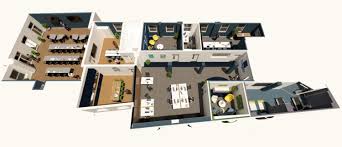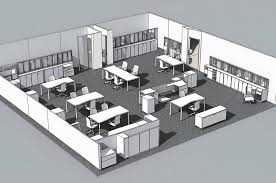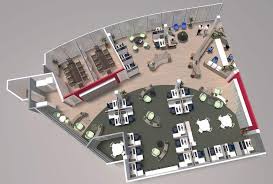Contents
Space layout is a fundamental concept in design, architecture, and urban planning. It encompasses the organization and arrangement of spaces within a physical environment, balancing functionality, aesthetics, and human experience. Whether applied to a small interior room, a commercial space, or an expansive urban area, space layout impacts how people interact with and perceive their surroundings.
Definition and Importance of Space Layout

Space layout refers to the structured planning and arrangement of physical spaces to meet specific goals and requirements. This concept applies to interior design, building architecture, and even city planning. Effective space layout enhances usability, promotes comfort, and supports the intended purpose of a space.
For example, in a home, the layout influences daily routines by determining how easily occupants can move between rooms. In an office, the layout impacts productivity by organizing workstations, meeting areas, and common spaces. In urban environments, the layout of roads, parks, and public spaces dictates traffic flow, accessibility, and community interaction.
Key Principles in Space Layout
Successful space layout relies on foundational principles that guide the design process. These principles ensure the final arrangement aligns with functional and aesthetic goals.
Functionality
The primary goal of any space layout is to fulfill its intended function. Whether designing a kitchen, office, or park, the layout must consider the activities that will take place and the people who will use the space. A well-functioning layout minimizes obstacles and maximizes efficiency.
Balance and Proportion
A harmonious balance between elements creates a visually appealing and functional space. Proportions should suit the purpose of the area. For instance, a large open living room might emphasize communal interaction, while a compact library prioritizes quiet, focused activities.
Flow and Circulation
How people move through a space—known as circulation—is a critical consideration in space layout. A good layout ensures smooth, logical pathways, avoiding bottlenecks and dead ends. In urban design, this principle translates to well-connected roads and pedestrian-friendly walkways.
Flexibility and Adaptability
Modern spaces often need to serve multiple functions or evolve over time. Flexible layouts accommodate these changes. For example, modular office furniture allows businesses to reconfigure workstations as needed, while multi-purpose community spaces can host diverse events.
Aesthetics
While functionality is essential, aesthetics also play a vital role in space layout. A visually pleasing space enhances user satisfaction and creates a welcoming atmosphere. This involves the strategic use of color, lighting, materials, and textures.
Applications of Space Layout

Space layout principles are applied across various disciplines, each with its unique challenges and opportunities.
Interior Design
In interior design, space layout focuses on arranging furniture, decor, and functional elements within rooms. The aim is to create a cohesive environment that balances comfort, practicality, and style. Key considerations include furniture placement, traffic flow, and optimizing natural light.
Architectural Design
Architects use space layout to design buildings that meet client needs while considering structural requirements. This involves planning room sizes, the relationship between spaces, and integrating natural features such as sunlight and ventilation.
Urban Planning
In urban planning, space layout extends to city blocks, public transportation networks, and green spaces. Planners strive to create cities that are livable, sustainable, and efficient. Effective layouts consider population density, accessibility, and environmental impact.
Retail and Commercial Spaces
Retail spaces rely heavily on strategic layouts to influence customer behavior. From the placement of shelves in a grocery store to the design of a luxury boutique, the layout can encourage sales, improve navigation, and enhance the overall shopping experience.
Tools and Techniques for Space Layout
Advances in technology have provided designers and planners with sophisticated tools to develop and refine space layouts. These tools allow for detailed visualization, precise measurements, and iterative design processes.
Computer-Aided Design (CAD)
CAD software enables designers to create detailed 2D and 3D models of spaces. These models help visualize layouts, experiment with different configurations, and identify potential issues before construction begins.
Virtual Reality (VR) and Augmented Reality (AR)

VR and AR technologies allow users to explore space layouts in immersive environments. This can help clients and designers experience spaces from a first-person perspective, aiding in decision-making and fine-tuning designs.
Space Optimization Algorithms
For complex projects, especially in urban planning, algorithms can analyze data to recommend optimal layouts. These tools consider factors such as traffic patterns, environmental sustainability, and human behavior.
Challenges in Space Layout
While space layout offers numerous benefits, it also presents challenges that require careful consideration and creative solutions.
Limited Space
Designers often need to work within spatial constraints, whether due to physical limitations or budget restrictions. This requires innovative solutions to maximize functionality without sacrificing aesthetics.
Diverse User Needs
Spaces must accommodate a wide range of users with different preferences, abilities, and requirements. Universal design principles, which focus on accessibility and inclusivity, are essential in addressing this challenge.
Balancing Aesthetics and Functionality
Striking the right balance between beauty and practicality wdbos can be difficult. Overemphasizing aesthetics may compromise functionality, while a purely functional approach can result in unappealing designs.
Environmental Considerations
Sustainable design is increasingly important in modern space layout. This involves using eco-friendly materials, optimizing energy efficiency, and minimizing environmental impact.
Trends in Space Layout
The field of space layout is constantly evolving, influenced by cultural, technological, and environmental changes. Current trends reflect a shift towards flexibility, sustainability, and human-centric design.
Open and Flexible Spaces
Open layouts have gained popularity in both residential and commercial settings. These spaces foster collaboration and social interaction while allowing for customization and adaptation.
Biophilic Design
Biophilic design incorporates natural elements into layouts, such as plants, water features, and natural lighting. This approach enhances well-being and connects occupants to the natural world.
Smart Design
The integration of smart technology into layouts allows for enhanced functionality and convenience. Examples include automated lighting, temperature controls, and smart furniture that adjusts to user needs.
Minimalism
Minimalist layouts prioritize simplicity and functionality, reducing clutter and emphasizing clean lines. This trend is especially popular in urban environments, where space is often limited.
Conclusion
Space layout is a dynamic and multifaceted discipline that shapes how we interact with our environments. By balancing functionality, aesthetics, and user needs, effective layouts enhance daily life, foster creativity, and support community connections. Whether designing a cozy home, a bustling office, or a vibrant city, the principles of space layout remain a cornerstone of successful design. As technology and societal priorities continue to evolve, the future of space layout promises even greater innovation and adaptability.





